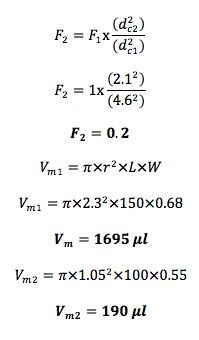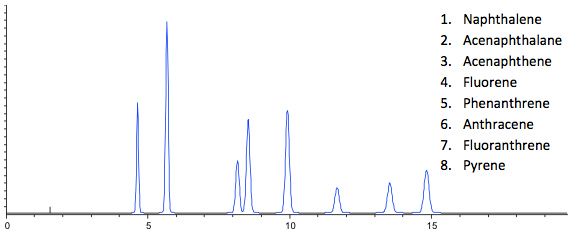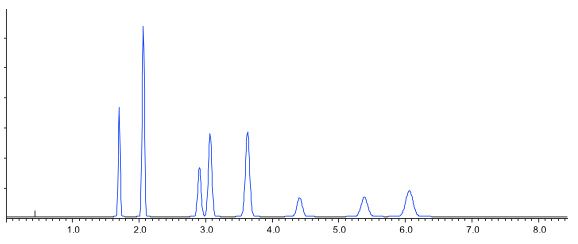HPLC Column Transfer from Fully Porous to Core-Shell Particles in Three Simple Equations
There are often times in my work when I need to 'mess about' with column dimensions and particle morphologies. For 'mess about' read improve or transfer.
There are often times in my work when I need to 'mess about' with column dimensions and particle morphologies. For 'mess about' read improve or transfer.
There are many online calculators to do this – however I never really found one which worked as well or as intuitively as the simple maths which follows here. I actually have this programmed into an Excel spreadsheet (write to enquiries@crawfordscientific.com if you would like a copy), however it's great to work through the simple maths in order to really understand what is going on. As I will show you below, this calculation, while derived from chromatographic theory, is actually very easy to use and the variables are all to hand.
On a serious note – when 'messing about' with HPLC methods and changing column dimensions and/or particle morphologies (from fully porous to core-shell type columns for example), if one does not change the gradient steepness, then there may be SIGNIFICANT changes not only to retention times but also to the selectivity (and resolution) between peaks within the chromatogram. You therefore absolutely need to use the equations below (or a similar method) in order to get equivalent separations – incidentally you will also need to use our equations below to maintain the eluent linear velocity.
So – here goes.
I would like to transfer the following method;
C18 fully porous particle 150 mm x 4.6 mm x 3.5 µm with an eluent flow rate of 1.0 mL/min. with a gradient of 20% B to 60% B in 10 min.
to a
C18 core-shell column 100 mm x 2.1 mm x 2.7 µm using the same eluotropic range (20% B to 60% B)
Here are the equations we will use to achieve the transfer;
Flow rate transfer to maintain eluent linear velocity between columns

F = flow rate (mL/min.)
dc = column diameter (mm)
1 = original column parameter
2 = new column parameter
Equation to calculate the new gradient time to maintain relative retention (i.e. selectivity);

tg = gradient time (min.)
Vm= interstitial volume of the column (µl)
F = flow rate (mL/min.)
Calculation of the column interstitial (dwell) volume;

r = column radius (mm)
L = column length (mm)
W = column % interstitial porosity
The only approximation that you need to know
W (fully porous materials) ≅68% ≅0.68
W (core-shell particles) ≅ 55% ≅ 0.55
If you want to be sure of these numbers – contact your column supplier, however these approximations are usually accurate enough.
So – lets go with the translation;
C18 fully porous particle 150 mm x 4.6 mm x 3.5 µm with an eluent flow rate of 1.0 mL/min. with a gradient of 20% B to 60% B in 10 minutes
to a
C18 core-shell column 100 mm x 2.1 mm x 2.7 µm using the same eluotropic range (i.e. 20% B to 60% B)

OK – now we have everything we need for the calculation

So – the new method is as follows;
C18 core-shell column 100 mm x 2.1 mm x 2.7 µm at an eluent flow rate of 0.2 mL/min. with a gradient time (20% B to 60% B) of 5.6 min.
With these very simple equations we have been able to derive new conditions to enable us to achieve a faster or high efficiency separation with a new column dimension and particle morphology.
C18 fully porous particle 150 mm x 4.6 mm x 3.5 µm with an eluent flow rate of 1.0 mL/min.
with a gradient of 20% B to 60% B in 10 min.

C18 core-shell column 100 mm x 2.1 mm x 2.7 µm at an eluent flow rate of 0.6 mL/min.
with a gradient time of 20% B to 60% B in 5.6 min.

Figure 1: Comparison of chromatograms created using the two methods studied in the text
– sample is a range of PNAH standards
The LCGC Blog: Historical (Analytical) Chemistry Landmarks
November 1st 2024The American Chemical Society’s National Historic Chemical Landmarks program highlights sites and people that are important to the field of chemistry. How are analytical chemistry and separation science recognized within this program?
